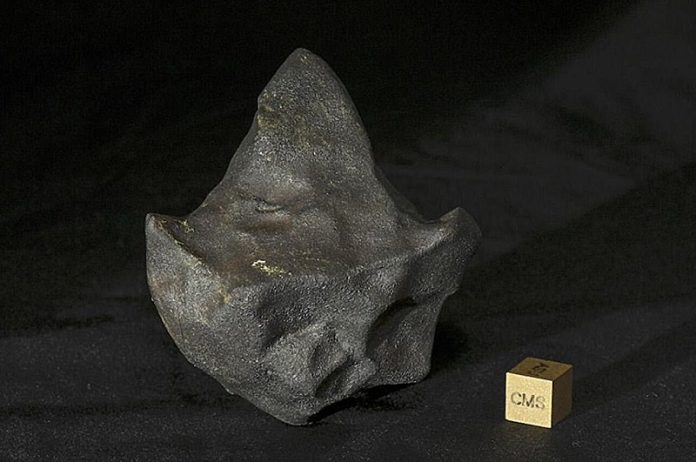
In April 2019, a rare and powerful meteorite fell near the town of Aguas Zarcas in northern Costa Rica.
Scientists say it’s one of the most important meteorite falls in the past 50 years, and it’s helping them learn more about the early solar system and how space rocks travel through space.
The meteorite is called a “mudball” because it contains water-rich minerals. These types of rocks are usually thought to be soft and fragile.
But this one surprised scientists—it turned out to be much stronger than expected.
Meteor expert Peter Jenniskens from the SETI Institute and NASA Ames Research Center said that about 27 kilograms of meteorite pieces were collected, making it the biggest fall of this kind since the famous Murchison meteorite landed in Australia in 1969.
That fall happened just two months after humans first landed on the moon, and scientists were ready to study space rocks. The Aguas Zarcas fall is seen as just as important for modern meteorite research.
The fall in Costa Rica created a big buzz. People saw a bright fireball streak across the sky, and later, black rocks were found on the ground.
It was the most widely reported fireball in Costa Rica in over 150 years. Jenniskens worked with geologist Gerardo Soto from the University of Costa Rica to study what happened.
By analyzing video footage, scientists found that the meteor entered Earth’s atmosphere from the west-northwest at a steep angle, moving at a speed of 14.6 kilometers per second.
It passed through the atmosphere with surprisingly little damage before breaking into pieces about 25 kilometers above the ground. A bright flash, caused by this final breakup, was even spotted by satellites in orbit.
Luckily, the meteorite fell at the end of a long dry season, which helped preserve the pieces. Many of the stones landed gently on soft jungle and grassy areas, and some were found nearly intact.
Researchers noticed that many stones had beautiful shapes and shiny black “fusion crusts” caused by the heat as they passed through the atmosphere. Some even had a blue shimmer.
Even though it’s called a mudball, this meteorite wasn’t weak. Its strength seems to come from the fact that it didn’t get cracked by collisions in space. Most meteorites have been damaged in space by crashing into other objects. But this rock avoided all of that.
Cosmochemist Kees Welten from UC Berkeley studied how long the rock had been exposed to cosmic rays, which tells scientists how long ago it broke off from its parent asteroid. His team found it had been traveling through space for about two million years. Other similar meteorites were broken off more recently.
The original rock was about 60 centimeters across when it entered the atmosphere. By tracing its path, scientists believe it came from the outer part of the asteroid belt between Mars and Jupiter.
Thanks to its strong structure and steep entry into Earth’s atmosphere, a large portion of the meteorite survived and reached the ground.
For scientists, this rare fall is a cosmic gift that offers a better understanding of how some space rocks stay whole through their long journey to Earth.



